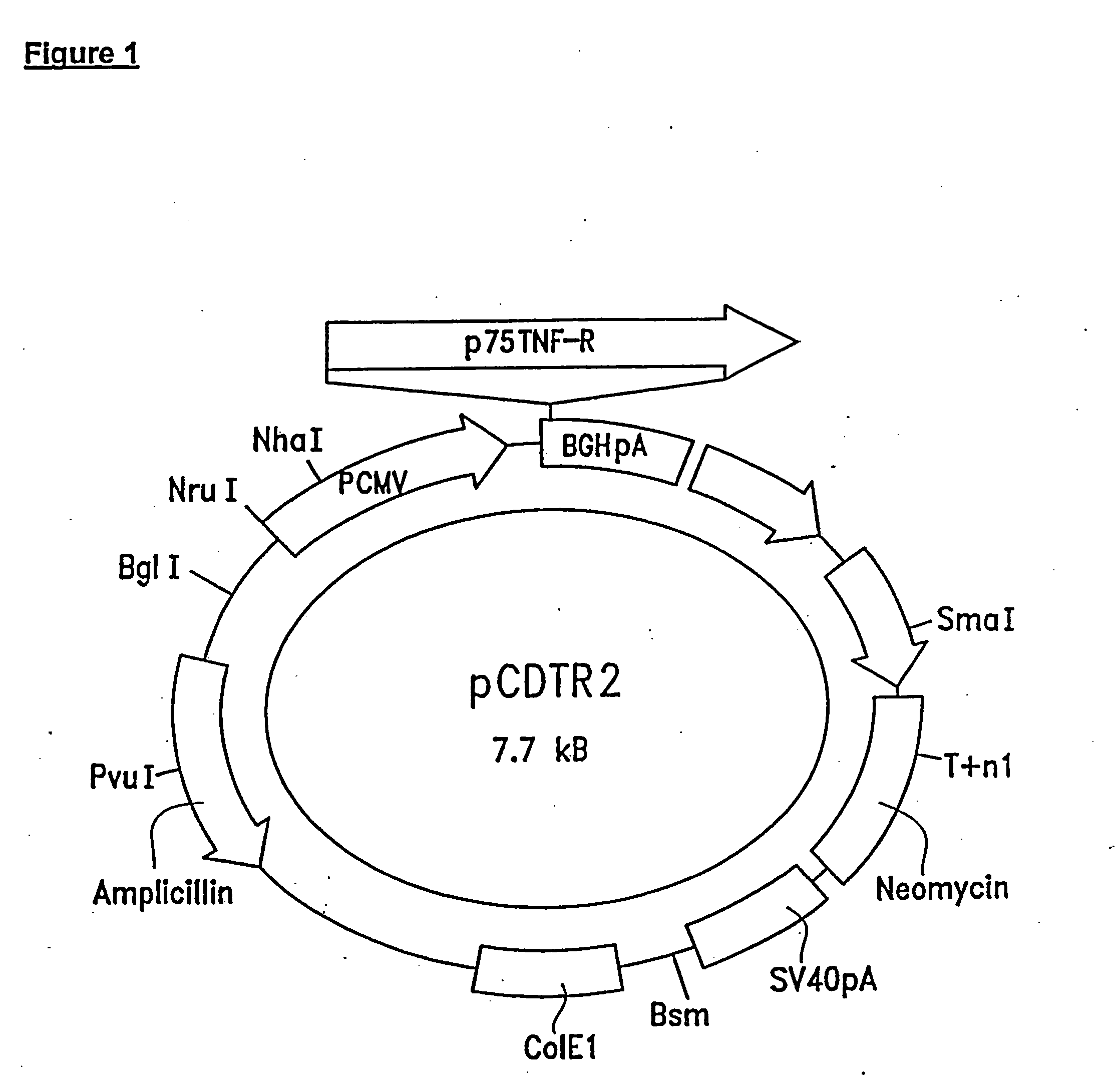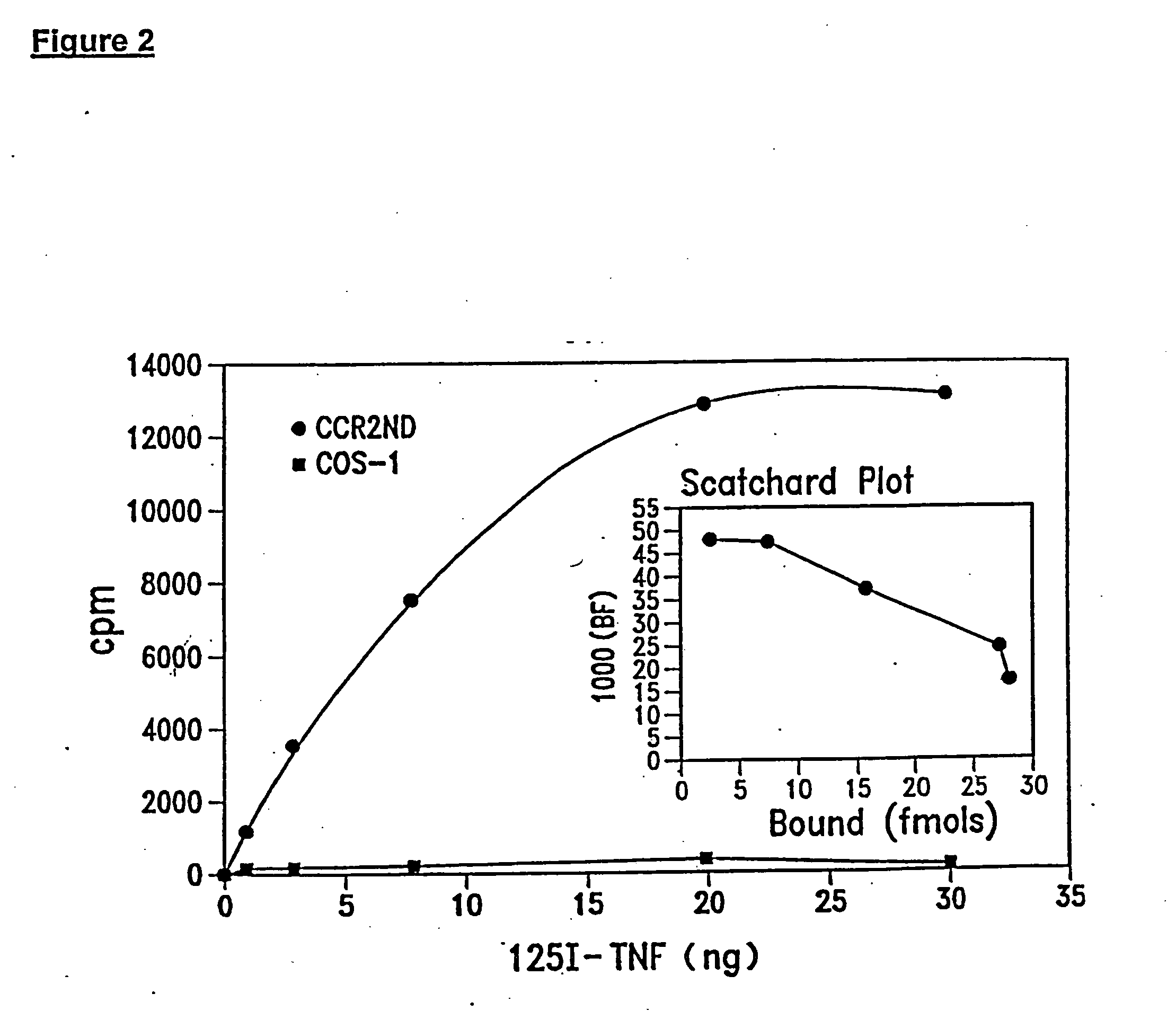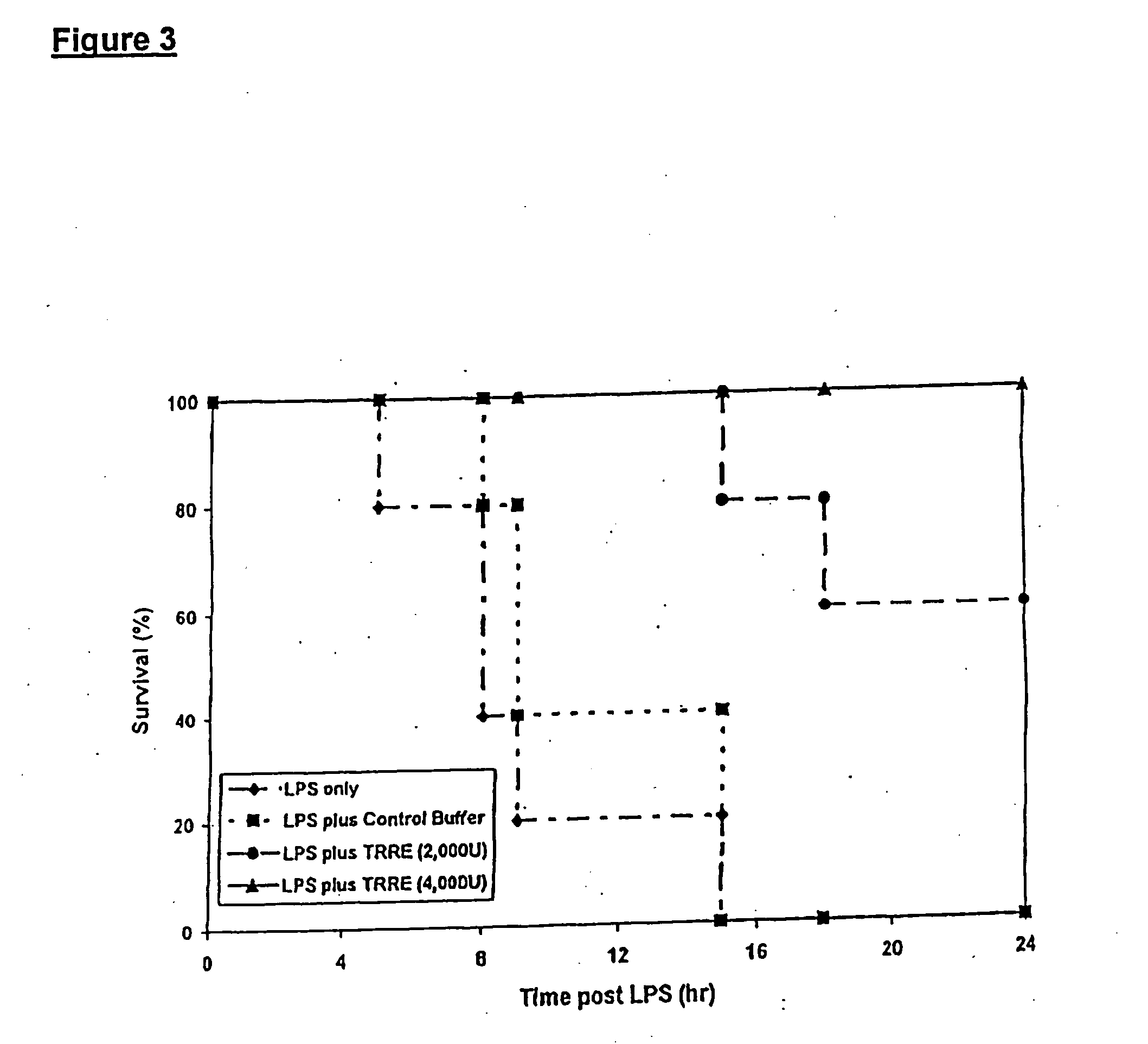Pharmaceutical compositions for treating arthritis and inflammatory disease
a technology of inflammatory disease and pharmaceutical compositions, applied in the field of signal transduction, can solve problems such as significant sequence homology
- Summary
- Abstract
- Description
- Claims
- Application Information
AI Technical Summary
Benefits of technology
Problems solved by technology
Method used
Image
Examples
example 1
Assay System for TRRE Activity
[0102] This Example illustrates an assay system that measures TRRE activity on the human TNF-R in its native conformation in the cell surface membrane.
[0103] Membrane-associated TNF-R was chosen as the substrate, as having microenvironment similar to that of the substrate for TRRE in vivo. Membrane-associated TNF-R also requires more specific activity, which would differentiate less-specific proteases. Cells expressing an elevated level of the p75 form of TNF-R were constructed by cDNA transfection into monkey COS-1 cells which express little TNF-R of either the 75 kDa or 55 kDa size.
[0104] The procedure for constructing these cells was as follows: cDNA of human p75 TNF-R was cloned from a λgt10 cDNA library derived from human monocytic U-937 cells (Clontech Laboratories, Palo Alto, Calif.). The first 300 bp on both 5′ and 3′ ends of the cloned fragment was sequenced and compared to the reported cDNA sequence of human p75 TNF-R. The cloned sequence w...
example 2
Characterization of TRRE Obtained from THP-1 Cells
[0118] TRRE obtained by PHA stimulation of THP-1 cells was partially purified from the culture medium (WO 9802140). First, protein from the medium was concentrated by 100% saturated ammonium sulfate precipitation at 4° C. The precipitate was pelleted by centrifugation at 10,000×g for 30 min and resuspended in PBS in approximately twice the volume of the pellet. This solution was then dialyzed at 4° C. against 10 mM Tris-HCl, 60 mM NaCl, pH 7.0. This sample was loaded on an anion-exchange chromatography, Diethylaminoethyl (DEAE)-Sephadex A-25 column (Pharmacia Biotech) (2.5×10 cm) previously equilibrated with 50 mM Tris-HCl, 60 mM NaCl, pH 8.0. TRRE was then eluted with an ionic strength linear gradient of 60 to 250 mM NaCl, 50 mM Tris-HCl, pH 8.0. Each fraction was measured for absorbance at 280 nm and assayed for TRRE activity. The DEAE fraction with the highest specific activity (the highest value of TRRE units / A280) was pooled an...
example 3
TRRE Activity Alleviates Septic Shock
[0126] The following protocol was used to test the effects of TRRE in preventing mortality in a model for septic shock. Mice were injected with lethal or sublethal levels of LPS, and then with a control buffer or TRRE. Samples of peripheral blood were then collected at intervals to establish if TRRE blocked TNF-induced production of other cytokines in the bloodstream. Animals were assessed for the ability of TRRE to block the clinical effects of shock, and then euthanized and tissues examined by histopathological methods.
[0127] Details were as follows: adult Balb / c mice, were placed in a restraining device and injected intravenously via the tail vein with a 0.1 ml solution containing 10 ng to 10 mg of LPS in phosphate buffer saline (PBS). These levels of LPS induce mild to lethal levels of shock in this strain of mice. Shock results from changes in vascular permeability, fluid loss, and dehydration, and is often accompanied by symptoms includin...
PUM
| Property | Measurement | Unit |
|---|---|---|
| Fraction | aaaaa | aaaaa |
| Fraction | aaaaa | aaaaa |
| Immunogenicity | aaaaa | aaaaa |
Abstract
Description
Claims
Application Information
 Login to View More
Login to View More - R&D
- Intellectual Property
- Life Sciences
- Materials
- Tech Scout
- Unparalleled Data Quality
- Higher Quality Content
- 60% Fewer Hallucinations
Browse by: Latest US Patents, China's latest patents, Technical Efficacy Thesaurus, Application Domain, Technology Topic, Popular Technical Reports.
© 2025 PatSnap. All rights reserved.Legal|Privacy policy|Modern Slavery Act Transparency Statement|Sitemap|About US| Contact US: help@patsnap.com



